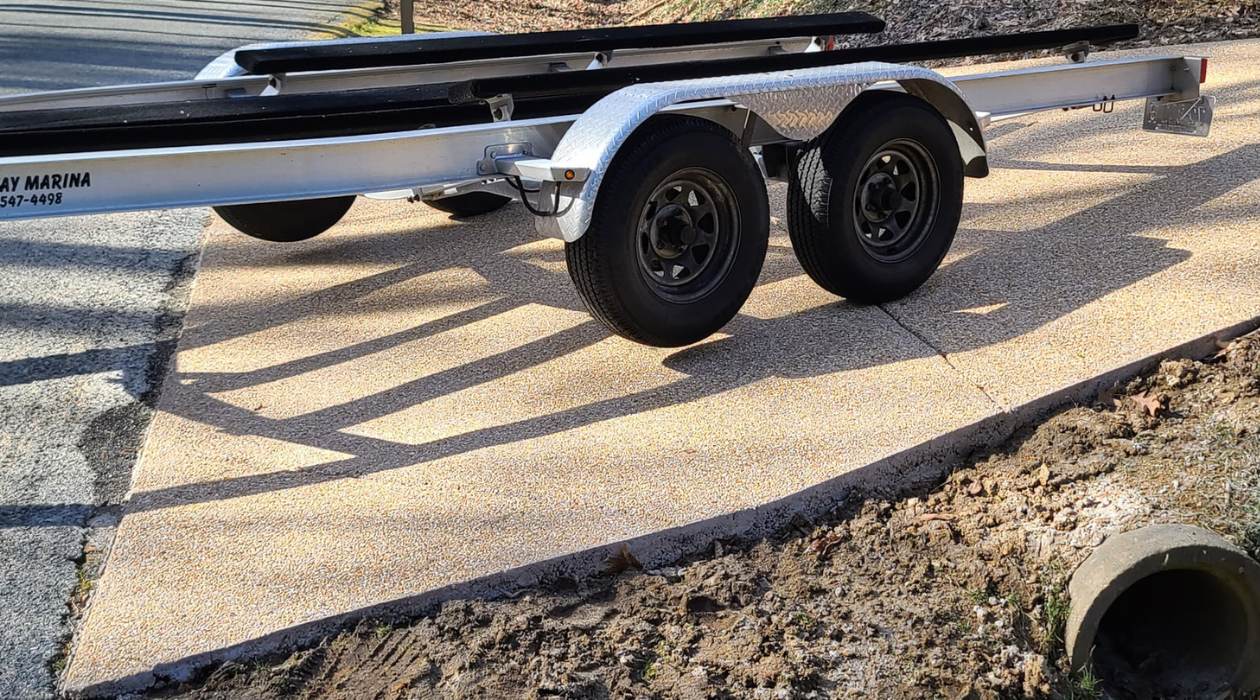

Articles
How To Back A Trailer Into A Driveway
Modified: February 23, 2024
Learn the step-by-step process of how to back a trailer into your driveway with our informative articles. Get expert tips and avoid common mistakes to ensure a smooth maneuver.
(Many of the links in this article redirect to a specific reviewed product. Your purchase of these products through affiliate links helps to generate commission for Storables.com, at no extra cost. Learn more)
Introduction
Backing a trailer into a driveway can be an intimidating task for both experienced and novice drivers. The tight spaces, limited visibility, and the need for precise maneuvering can often make it a challenging feat. However, with the right techniques and practical knowledge, anyone can master the art of backing a trailer into a driveway.
In this article, we will explore the step-by-step process of backing a trailer into a driveway. We will discuss the importance of choosing the right trailer and assessing the driveway before attempting to back up. We will also cover the necessary preparations for both the vehicle and trailer, including adjusting mirrors and seat position.
Furthermore, we will dive into the different methods of backing up with the help of a spotter and utilizing trailer backup assist systems. We will also explore the concept of trailer angles and steering, along with the importance of using reference points to guide your movements. Additionally, we will discuss the art of steering with a trailer and provide tips on how to improve your skills through practice in an open space.
Throughout the article, we will address common issues that may arise during the process and provide troubleshooting tips to overcome them. By the end of this guide, you will have a comprehensive understanding of how to effectively back a trailer into a driveway, allowing you to confidently tackle any backing challenge that comes your way.
So, let’s get started and embark on this journey to master the art of backing a trailer into a driveway!
Key Takeaways:
- Mastering the art of backing a trailer into a driveway requires choosing the right trailer, assessing the driveway, and utilizing reference points for precision and control.
- Effective communication with a spotter, utilizing trailer backup assist systems, and practicing in an open space are essential for mastering the art of backing a trailer into a driveway.
Read more: How To Back A Car Out Of The Driveway
Choosing the Right Trailer
Before attempting to back a trailer into a driveway, it is essential to ensure that you have the right trailer for the task at hand. The size, weight, and type of trailer can greatly affect your ability to maneuver it accurately in tight spaces.
Consider the following factors when choosing a trailer:
- Size and Length: Opt for a trailer that is suitable for the size of your vehicle and the available space in your driveway. It is crucial to have enough clearance without compromising maneuverability.
- Weight Capacity: Ensure that the trailer is capable of carrying the load you intend to transport. Overloading a trailer can affect stability and make it harder to control.
- Trailer Type: Different types of trailers have varying degrees of maneuverability. Flatbed or open trailers offer good visibility, while enclosed trailers may obstruct your view. Choose the trailer type that best suits your needs and driving skills.
- Hitch Compatibility: Verify that your vehicle’s hitch is compatible with the trailer you plan to use. If necessary, install the appropriate hitch and ensure it is securely attached.
It is worth noting that if you are new to trailer backing, it may be beneficial to start with a smaller trailer, as it will be easier to handle and maneuver in tight spaces.
Additionally, familiarize yourself with the specific dimensions and characteristics of the trailer you choose. Understanding its turning radius, rear overhang, and potential blind spots will help you anticipate its behavior when backing up.
By selecting the right trailer for the job and being aware of its limitations, you will set yourself up for success when it comes to maneuvering it safely and efficiently into your driveway.
Assessing the Driveway
Before attempting to back a trailer into a driveway, it is crucial to assess the conditions and layout of the driveway. This evaluation will help you plan your approach, make necessary adjustments, and avoid obstacles or potential hazards.
Here are some key factors to consider when assessing the driveway:
- Space Availability: Determine if the driveway offers sufficient space for maneuvering a trailer. Look for any obstructions such as trees, vehicles, or structures that may impede your path.
- Surface Conditions: Assess the condition of the driveway surface. Is it smooth or uneven? Are there any potholes or loose gravel that may affect traction? A solid and well-maintained surface is ideal for trailer maneuvering.
- Slope or Incline: Take note of any slopes or inclines in the driveway. Uphill or downhill slopes can affect the trailer’s stability and your ability to control it. Be prepared to adjust your technique accordingly.
- Accessibility: Consider the accessibility of the driveway entrance and its alignment with the road. Ensure that there is enough space to make a controlled entry and exit without interfering with traffic.
- Clearance: Measure the width and height of the entrance to the driveway to ensure that the trailer can pass through without scraping against any obstacles. Take into account any narrow gates or tight corners that may require careful maneuvering.
By thoroughly assessing the driveway, you can identify any potential challenges or limitations that may affect your ability to back a trailer into it. This evaluation will enable you to plan your approach, visualize the path you will take, and make any necessary adjustments to your technique or equipment.
Remember, proper preparation and knowledge of the driveway conditions will greatly increase your chances of successfully maneuvering the trailer into the desired spot in a controlled and safe manner.
Preparing the Vehicle and Trailer
Before attempting to back a trailer into a driveway, it is essential to properly prepare both the vehicle and the trailer. This preparation will ensure optimal performance, safety, and control during the backing process.
Here are some important steps to follow when preparing the vehicle and trailer:
- Inspecting the Vehicle: Before hooking up the trailer, thoroughly inspect the vehicle to ensure it is in good working condition. Check the tires, brakes, lights, and any towing equipment, such as the hitch or wiring harness. Address any mechanical or electrical issues before proceeding.
- Attaching the Trailer: Carefully and securely attach the trailer to the vehicle’s hitch according to the manufacturer’s guidelines. Ensure that all connections, including safety chains and electrical plugs, are properly fastened and in good condition. Double-check that the trailer is level and balanced, avoiding excessive tongue weight.
- Checking Lights and Signals: Test all lights and signals on the trailer to ensure they are functioning correctly. This includes brake lights, turn signals, and hazard lights. Having proper lighting is crucial for both your visibility and the visibility of other drivers on the road.
- Adjusting Tire Pressure: Verify and adjust the tire pressure on both the vehicle and trailer to the recommended levels. Proper tire inflation contributes to better stability and control while maneuvering the trailer.
- Securing Loose Items: Remove or secure any loose items within the vehicle or trailer that could shift during the backing process. This will minimize the risk of items falling or causing imbalance while in motion.
- Testing Trailer Brakes: If your trailer is equipped with brakes, verify that they are functioning correctly. Perform a test by activating the trailer brakes and ensuring they engage and release as intended. Proper functioning brakes are essential for safe stopping and controlling the trailer’s movement.
Taking the time to properly prepare both the vehicle and trailer will enhance safety, stability, and control during the backing process. It eliminates potential mechanical issues, ensures all connections are secure, and allows you to focus on the task at hand without unnecessary distractions or complications.
By following these preparation steps, you can approach the backing maneuver with confidence and set yourself up for a successful trailer backing experience.
Adjusting Mirrors and Seat Position
Properly adjusting your vehicle’s mirrors and seat position is crucial when it comes to backing a trailer into a driveway. These adjustments will optimize your visibility and provide you with essential visual cues to maneuver the trailer accurately.
Follow these steps to adjust your mirrors and seat position:
- Side Mirrors: Adjust the side mirrors so that you have a clear view of the trailer’s sides and the areas behind and beside it. Position the mirrors so that the edges of the trailer are visible within them, allowing you to track its movement as you back up.
- Center Rearview Mirror: Tilt the center rearview mirror slightly upward to expand your field of vision. This will allow you to observe the trailer’s movement in relation to objects behind your vehicle.
- Blind Spot Mirrors: Consider attaching blind spot mirrors or convex mirrors to your side mirrors. These mirrors can give you a wider field of view and help eliminate blind spots, enhancing your overall visibility.
- Seat Position: Adjust your seat position so that you have a clear line of sight over the hood of the vehicle and can comfortably reach the pedals and controls. A proper seating position will ensure you can easily maneuver and have good control of the vehicle and trailer.
- Seat Height and Angle: Tweak the seat height and angle to find a comfortable and optimal position that allows you to have a clear view of the road and mirrors. Avoid sitting too low or reclining excessively, as this can hinder your ability to accurately judge distances while backing up.
Remember to make these adjustments before you begin backing up. Taking the time to properly position your mirrors and seat will significantly enhance your visibility and awareness, making it easier to monitor the trailer’s movements and react accordingly.
Regularly check your mirrors throughout the backing process to stay informed about your surroundings and any potential obstacles or hazards. Utilize these visual aids effectively to guide your movements and ensure a smooth and controlled trailer backing experience.
Read more: How To Store A Camper Trailer
Backing Up with a Spotter
Backing up a trailer into a driveway can be made easier and safer with the assistance of a spotter. A spotter is someone positioned outside the vehicle who can provide guidance and communicate with the driver to help navigate the backing maneuver.
Here are some key tips for effective communication and coordination with a spotter:
- Establish Clear Signals: Before you start backing up, establish a set of clear and understood signals with your spotter. This can include hand signals, verbal cues, or a combination of both. Agree on the meaning of each signal, such as stop, go straight, turn left, turn right, and so on.
- Maintain Eye Contact: Maintain eye contact with your spotter throughout the backing process. This will allow you to stay connected and respond instantly to their instructions and signals.
- Use Walkie-Talkies: If possible, consider using two-way radios or walkie-talkies for communication between the driver and spotter. This can make communication more efficient, especially in situations where visual contact might be limited.
- Go Slowly: Backing up with a spotter requires patience and precision. Move slowly and incrementally to allow the spotter enough time to provide accurate instructions and for you to react accordingly.
- Trust Your Spotter: Have faith in your spotter’s guidance and trust their judgment. They have a better vantage point and can help navigate any blind spots or obstacles that may be difficult for you to see from the driver’s seat.
- Stay Calm and Focused: Maintain composure and concentrate on the spotter’s signals and instructions. Avoid distractions and keep your attention solely on the backing maneuver.
Backing up with a spotter can significantly reduce blind spots, improve accuracy, and enhance overall safety during the trailer backing process. It allows for better communication and coordination between the driver and spotter, making it easier to navigate tight spaces and obstacles.
Remember, effective communication and trust are key when working with a spotter. By following these tips and working together as a team, you can successfully back your trailer into the desired spot with confidence and precision.
Using Trailer Backup Assist Systems
Modern technology has made backing up a trailer into a driveway easier than ever with the introduction of trailer backup assist systems. These systems utilize advanced sensors, cameras, and algorithms to assist the driver in maneuvering the trailer accurately and safely.
Here are some common types of trailer backup assist systems and how to use them effectively:
- Trailer Hitch Guidance: This system provides on-screen guidelines or visual overlays on the rearview camera display to assist in aligning the vehicle’s hitch with the trailer’s hitch receiver. Follow the guidelines to position the vehicle correctly for a successful connection.
- Proximity Sensors: These sensors detect obstacles or objects in the path of the trailer while backing up. They provide audible alerts or visual cues to help the driver avoid collisions. Use the sensor feedback to adjust your steering and avoid obstacles in real-time.
- Trailer Angle Monitoring: This system monitors the angle between the vehicle and trailer during the backing maneuver. It provides real-time feedback on the trailer’s trajectory and helps the driver maintain control and alignment. Use the visual display or feedback to adjust your steering and correct any deviations.
- Automated Steering Assistance: Some advanced systems offer automated steering assistance, where the vehicle’s steering wheel is controlled by the system based on the driver’s input and the trailer’s movement. Follow the on-screen prompts and provide gentle inputs to the steering wheel to allow the system to steer the vehicle and trailer smoothly.
- Practice and Familiarize: Take the time to understand and familiarize yourself with the specific trailer backup assist system installed in your vehicle. Review the user manual, watch instructional videos, and practice in a safe environment to get comfortable with the system’s features and functionality.
Trailer backup assist systems are designed to complement your skills as a driver and make the backing process more intuitive and precise. However, it is still important to remain alert, pay attention to your surroundings, and use the information provided by the system as a guide rather than solely relying on it.
By utilizing these advanced technologies effectively, you can enhance your confidence and accuracy when backing a trailer into a driveway, ensuring a smoother and more controlled experience.
When backing a trailer into a driveway, use your side mirrors to guide you and go slow. Turn the steering wheel in the opposite direction you want the trailer to go. Keep practicing to improve your skills.
Understanding Trailer Angles and Steering
When backing a trailer into a driveway, understanding trailer angles and steering is crucial in achieving precise maneuvering and avoiding any potential collisions or accidents. Mastering these concepts will greatly enhance your ability to navigate tight spaces and ensure a successful trailer backing experience.
Here are the key factors to consider when it comes to trailer angles and steering:
- Back of the Trailer: The back of the trailer will swing in the opposite direction of the steering wheel when reversing. This means that if you turn the steering wheel to the left, the back of the trailer will swing to the right, and vice versa. Understanding this inverse relationship is essential in controlling the trailer’s movements.
- Sharp vs. Wide Turns: Depending on the trailer’s length and the tightness of the maneuver, you may need to execute either a sharp or wide turn. A sharp turn involves turning the steering wheel more aggressively to achieve a tighter radius. A wide turn, on the other hand, requires less steering input to achieve a broader turning arc. Practice different turn variations to become comfortable with their respective effects on the trailer’s path.
- Trailer Pivot Point: The pivot point is the point on which the trailer rotates around when backing up. It is usually located near the center of the trailer’s axle. Understanding the location of the pivot point allows you to anticipate how the trailer will respond to your steering inputs and adjust accordingly.
- Trailer Oversteer and Understeer: Similar to a vehicle, a trailer can exhibit oversteer or understeer. Oversteer occurs when the trailer swings too much and angles sharply during a turn. Understeer, on the other hand, refers to the trailer not turning as much as desired. Adjust your steering and control inputs to minimize these effects and maintain control of the trailer throughout the backing maneuver.
- Trailer Length Considerations: Longer trailers require wider turning arcs and more planning. They may also be more prone to jackknifing if not carefully controlled. Take the time to understand the characteristics and limitations of your specific trailer length to make more accurate steering and angle decisions.
By understanding these trailer angles and steering concepts, you can more effectively predict the trailer’s movements, make precise steering adjustments, and navigate the driveway with greater confidence. Practice and experience will further refine your skills, allowing you to master the art of maneuvering a trailer in tight spaces.
Remember to be patient, take your time, and make small, gradual adjustments to your steering inputs. Careful attention to trailer angles and steering will help you achieve a smooth and controlled backing process, even in challenging situations.
Using Reference Points
When backing a trailer into a driveway, using reference points can be incredibly helpful in maintaining accuracy and spatial awareness throughout the maneuver. Reference points serve as visual markers that help guide your movements and ensure that you stay on track.
Here are some key points to consider when using reference points:
- Fixed Objects: Identify fixed objects in your immediate surroundings, such as trees, lamp posts, or driveway markers. These objects can serve as reliable reference points to gauge distance and alignment as you back up the trailer. Use them as visual markers to monitor your progress and adjust your steering accordingly.
- Vehicle and Trailer Alignment: Pay close attention to the alignment of your vehicle and trailer with reference to the driveway edges or other fixed structures. Aim to keep the trailer parallel to the driveway and ensure equal distances on both sides to maintain balance and prevent jackknifing.
- Driveway Features: Take note of any distinct features or markings on the driveway that can act as reference points. These could include cracks, pavement lines, or driveway edges. Utilize these features to guide your trailer’s path and maintain a consistent alignment.
- Corner of the Vehicle: Focus on the corner of your vehicle or the side mirror as a reference point. By aligning specific parts of your vehicle with visual markers, you can gauge the distance and trajectory of the trailer more accurately.
- Practice and Experience: Developing proficiency in using reference points requires practice and experience. Spend time in open areas or large parking lots to practice backing up and using various reference points. This will help you develop a better understanding of your trailer’s dimensions and how it responds to different steering inputs.
Remember that reference points will vary depending on the specific dimensions of your trailer and the driveway’s characteristics. What matters most is finding visual cues that you are comfortable with and that consistently guide your backing movements. With practice, you will develop a keen eye for reference points and gain more confidence in maneuvering your trailer into the desired spot.
Using reference points as a guide, in combination with proper steering and awareness of trailer angles, will greatly enhance your ability to back a trailer into a driveway with precision and control.
Read more: How To Repair A Trailer Home
Mastering the Art of Steering
Steering plays a crucial role when it comes to successfully backing a trailer into a driveway. Mastering the art of steering will allow you to make precise adjustments and confidently navigate tight spaces. Here are some key tips to help you become proficient in steering while backing a trailer:
- Start Small: If you are new to backing a trailer, start by practicing in an open area or a wide space. This will allow you to get familiar with the responsiveness of the trailer to steering inputs and build your confidence.
- Gentle and Smooth Movements: When steering, avoid sudden or jerky movements. Aim for gentle, gradual adjustments to maintain control and prevent the trailer from swinging or jackknifing. Smooth steering inputs will result in smoother trailing movements.
- Use the Bottom of the Steering Wheel: When reversing, use the bottom of the steering wheel as a reference point. For example, if you want to steer the trailer to the right, turn the bottom of the steering wheel to the right. This method helps counteract the inverse movement of the trailer and guides your steering more intuitively.
- Steer Earlier: Anticipate your steering adjustments and start turning the wheel earlier than you would when driving forward. This proactive approach compensates for the delayed response of the trailer and allows you to make smoother and more controlled movements.
- Small Corrections: Instead of making large steering corrections, make smaller, incremental adjustments as you back up. This will help you maintain better control and ensure that you stay within the desired path without overcompensating.
- Patience and Observation: Be patient and observant while backing up. Continuously monitor the trailer’s movement and adjust your steering as needed. Pay attention to the trailer’s angles, alignment, and clearance to ensure a safe and precise maneuver.
Practice is key in mastering the art of steering while backing a trailer. The more you practice and become accustomed to the trailer’s behavior, the more intuitive your steering inputs will become.
Remember to be patient with yourself and allow for a learning curve. Each trailer and driveway combination may require slightly different steering techniques. With time and experience, you will develop the necessary skills to control the trailer’s movement confidently and execute smooth and accurate maneuvers.
By practicing these steering techniques and maintaining a calm and focused mindset, you can become a master of steering while backing a trailer into a driveway.
Practicing in an Open Space
Practicing backing a trailer in an open space is essential for developing the necessary skills, confidence, and spatial awareness required for maneuvering into a driveway. An open space provides you with ample room to practice and allows you to focus solely on mastering the backing technique without the added pressure of potential obstacles or hazards.
Here are some key tips for practicing in an open space:
- Choose a Suitable Location: Find a large, open area such as an empty parking lot, field, or wide road that is free from traffic and obstructions. Ensure that you have permission to use the space and that it is legal and safe to practice backing a trailer there.
- Mark Your Practice Area: Use cones, traffic pylons, or other markers to create reference points and simulate a driveway’s boundaries. Arrange them in a way that mimics the dimensions and layout of the driveway you will eventually be backing into.
- Start with Basic Maneuvers: Begin by practicing simple straight-line backing and straight-line reversing exercises. Focus on developing a smooth and controlled steering technique, maintaining straight alignment with the practice area boundaries.
- Progress to Cornering and Angles: Once you have mastered straight-line maneuvers, gradually introduce cornering and angled reversing exercises. Practice steering the trailer around markers or simulating tight turns to improve your ability to navigate corners with precision.
- Experiment with Different Setups: Vary the setups and scenarios in your practice sessions. Create different challenges by adjusting the distance between the markers, adding obstacles, or simulating narrow driveways. This will help you develop adaptability and improve your ability to handle various real-world situations.
- Practice with Different Trailers: If you have access to multiple trailers, practice with each of them. Different trailers have different dimensions and weights, which can affect how they respond to steering inputs and back up in different scenarios. Practicing with a variety of trailers will help you become more versatile in your backing skills.
- Document Your Progress: Take videos or photos of your practice sessions to review your technique and observe areas for improvement. Analyze your performance, identify any weak points, and work on refining those areas in subsequent sessions.
- Seek Professional Guidance: Consider enrolling in a trailer backing course or seeking guidance from a professional instructor. They can provide valuable tips, feedback, and guidance specific to your skill level and help you improve your technique more efficiently.
Remember, practice makes perfect. Regularly dedicating time to practice in an open space will enhance your ability to control the trailer, improve your spatial awareness, and boost your confidence in backing a trailer into a driveway.
By following these tips, staying focused, and persistently practicing in an open space, you will gain the skills and expertise necessary to tackle any backing challenge that comes your way.
Troubleshooting Common Issues
While backing a trailer into a driveway, you may encounter common issues that can disrupt your progress or cause frustration. It is important to be aware of these issues and have strategies in place to troubleshoot them effectively. Here are some common issues and their possible solutions:
- Oversteering or Understeering: One of the most common issues is oversteering or understeering, which can result in the trailer swinging too much or not turning as much as desired. If you find yourself oversteering, try reducing the steering input and making smaller, more calculated adjustments. If you are understeering, slightly increase the steering input to achieve the desired angle.
- Jackknifing: Jackknifing occurs when the trailer angle becomes too extreme, causing the trailer to swing towards the tow vehicle. To prevent or recover from a jackknife, stop immediately and straighten the steering wheel. Then, slowly pull forward to realign the trailer with the tow vehicle. Avoid harsh braking or accelerating to maintain control.
- Too Close to Obstacles: If you find yourself getting too close to obstacles, such as walls or other vehicles, immediately stop and assess the situation. Adjust your steering and use gentle movements to maneuver away from the obstacle. It may be necessary to exit the vehicle and physically check the distance between the trailer and the obstacle for better accuracy.
- Lack of Visibility: Limited visibility can be a common issue, especially when backing into a driveway at night or in low-light conditions. Ensure that your vehicle’s lights are turned on and use auxiliary lights, if available, to improve visibility. If necessary, ask a spotter to guide you or consider using backup cameras or sensors for better visual cues.
- Difficulty Judging Distances: Judging distances accurately can be challenging, especially for those who are less experienced. One way to overcome this issue is by practicing in open spaces and using reference points as visual markers. These markers will help you estimate the position and alignment of the trailer and assist in maintaining the desired trajectory.
- Avoiding Abrupt Movements: Abrupt movements, such as sudden acceleration or harsh braking, can lead to loss of control or cause the trailer to swing unexpectedly. Focus on making smooth and gradual movements, both with the steering wheel and the vehicle’s controls, to maintain stability and control throughout the backing process.
Remember, troubleshooting common issues while backing a trailer requires patience, practice, and the ability to adapt to different situations. Take your time, stay calm, and develop a problem-solving mindset. Each experience will provide valuable lessons that will contribute to your overall growth and proficiency in trailer backing.
By being aware of these common issues and implementing the appropriate solutions, you can overcome challenges and confidently back your trailer into a driveway with precision and control.
Conclusion
Backing a trailer into a driveway may seem like a daunting task, but with the right knowledge, techniques, and practice, it can become a skill you can confidently master. Throughout this article, we have discussed the essential steps to successfully back a trailer into a driveway.
We started by emphasizing the importance of choosing the right trailer and assessing the driveway’s conditions to ensure a smooth and safe backing process. We then explored the significance of preparing the vehicle and trailer, including adjusting mirrors and seat position, to optimize visibility and control. Additionally, we discussed the benefits of utilizing a spotter and trailer backup assist systems to aid in the maneuvering process.
We delved into the concepts of trailer angles and steering, emphasizing the need for understanding how the trailer responds to steering inputs and the inverse relationship between the steering wheel and the trailer’s movement. We also highlighted the value of using reference points, both fixed objects and the vehicle itself, to guide your movements and maintain alignment.
Furthermore, we discussed the importance of practicing in an open space to refine your skills, build confidence, and become familiar with different trailer setups and scenarios. We also addressed troubleshooting common issues such as oversteering, understeering, jackknifing, and lack of visibility, offering strategies to mitigate these challenges.
In conclusion, backing a trailer into a driveway requires a combination of knowledge, technique, and practice. By applying the guidance provided in this article and persevering through practice sessions, you will progressively improve your skills and become adept at maneuvering a trailer with precision and control.
Remember to maintain a patient and focused approach, embrace the learning process, and prioritize safety at all times. With time and experience, you will gain the confidence and expertise needed to successfully back a trailer into any driveway, setting yourself up for seamless adventures and efficient transportation.
Frequently Asked Questions about How To Back A Trailer Into A Driveway
Was this page helpful?
At Storables.com, we guarantee accurate and reliable information. Our content, validated by Expert Board Contributors, is crafted following stringent Editorial Policies. We're committed to providing you with well-researched, expert-backed insights for all your informational needs.
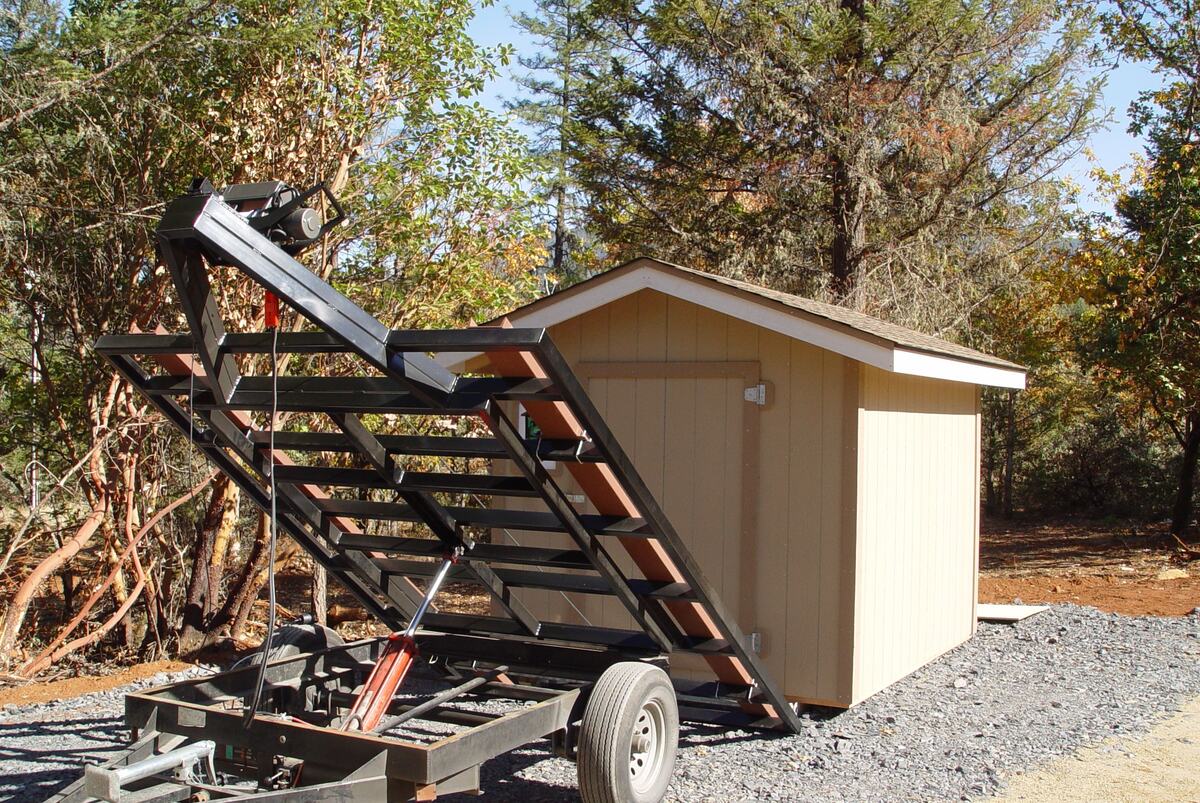
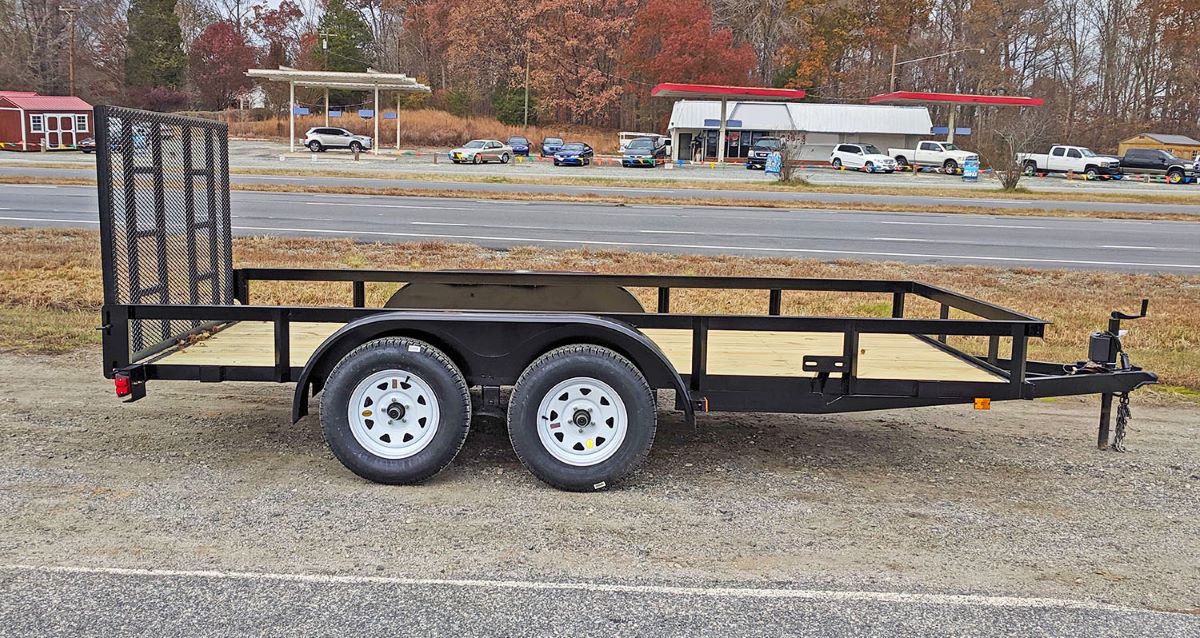
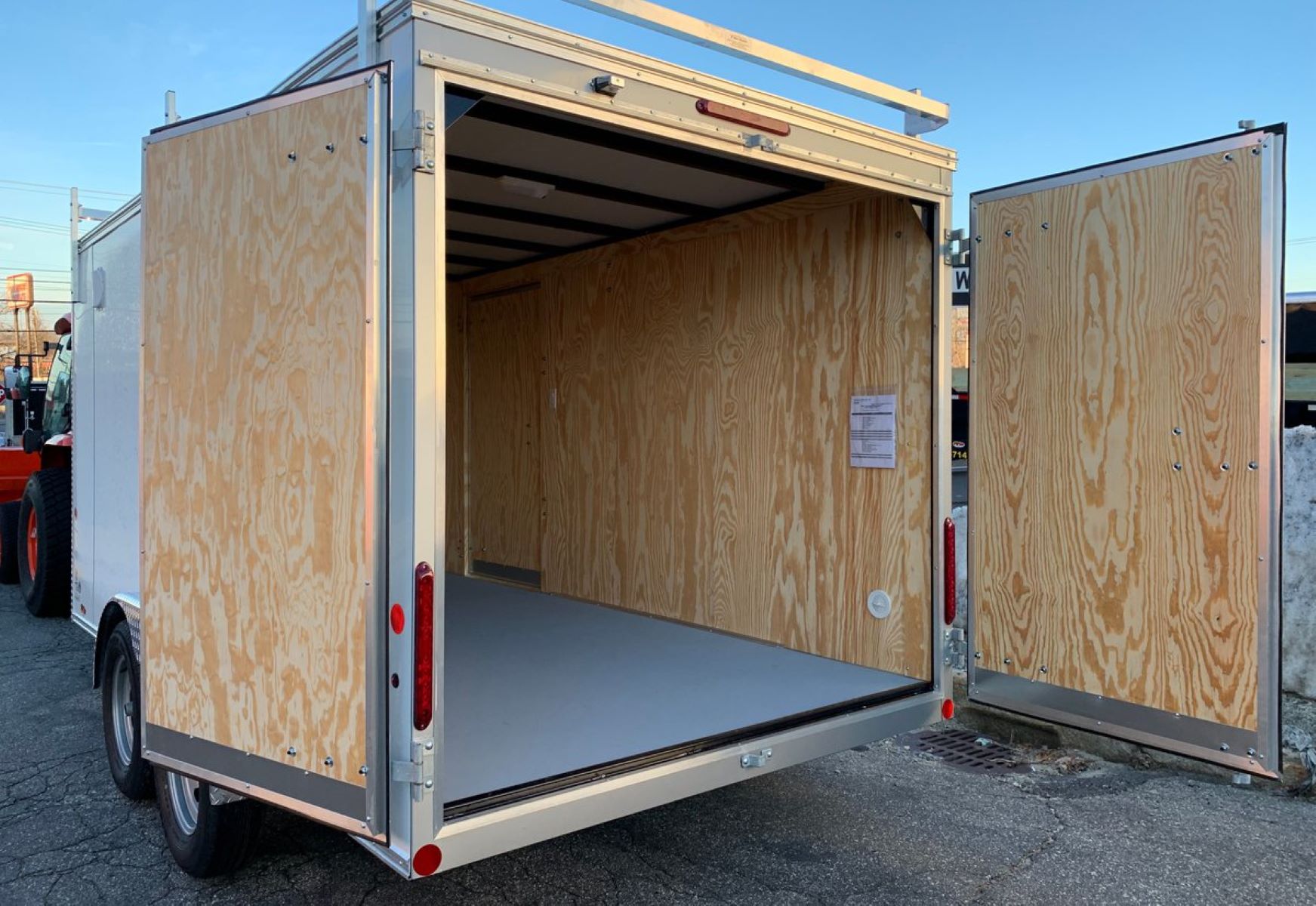
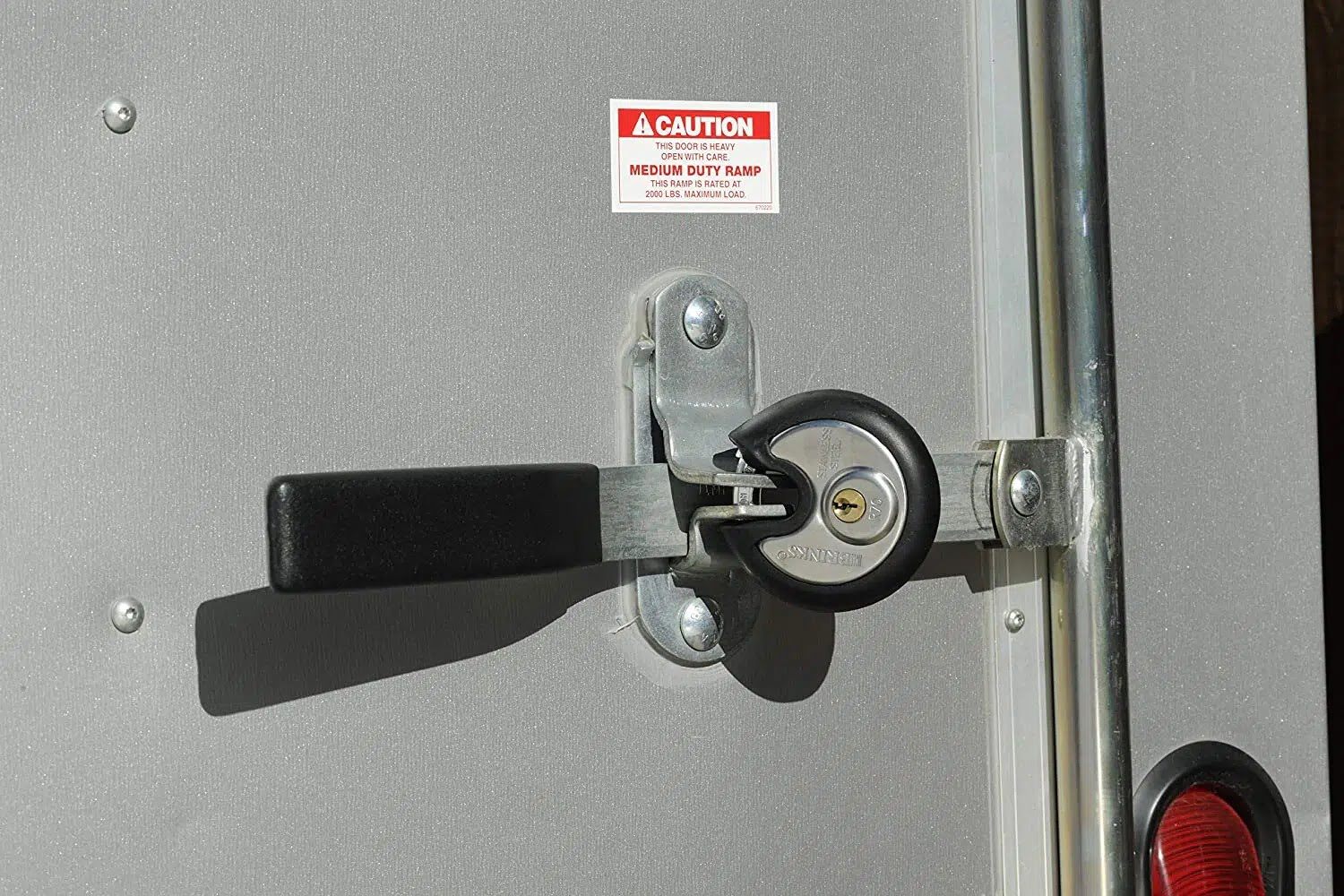

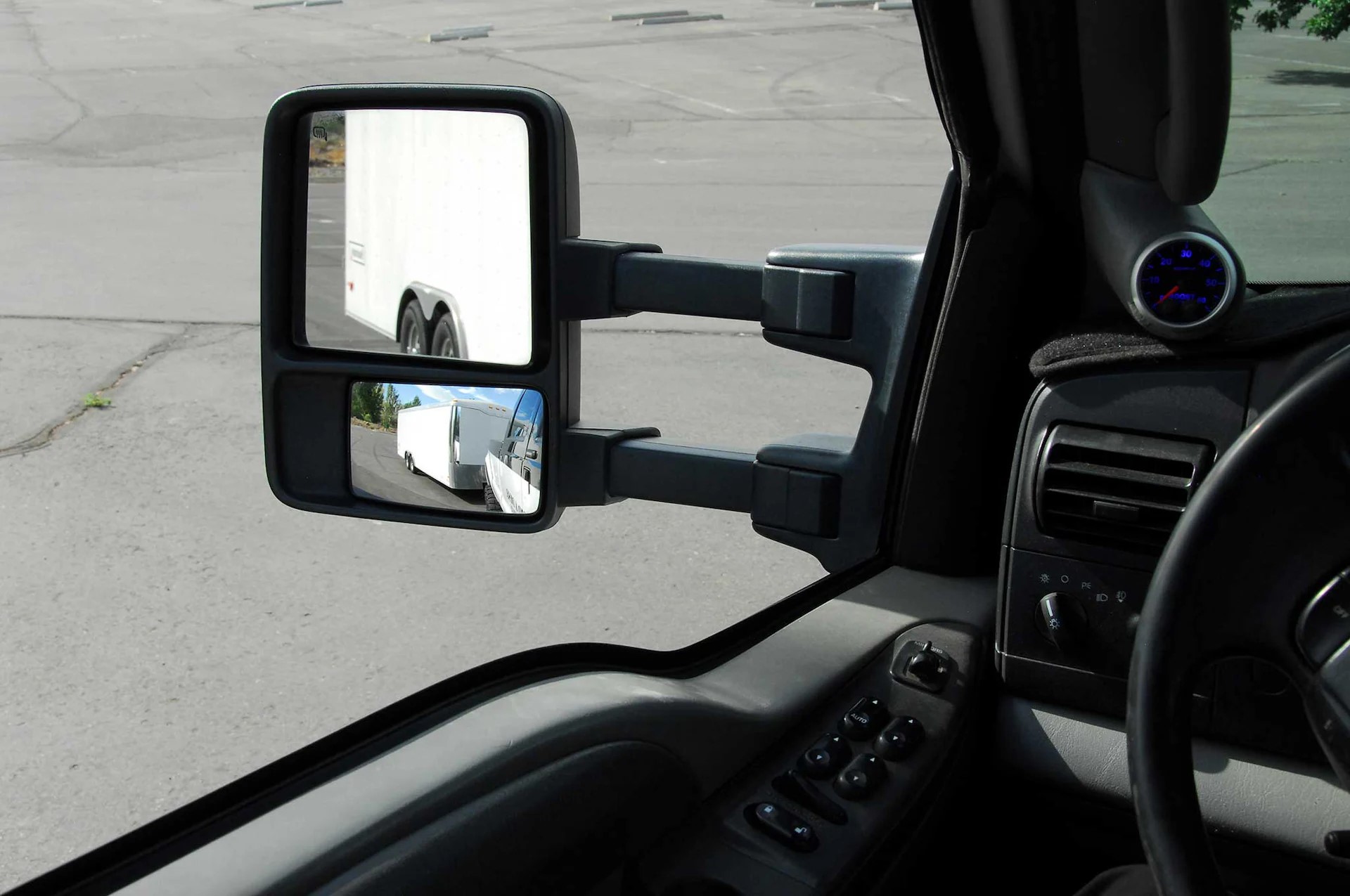

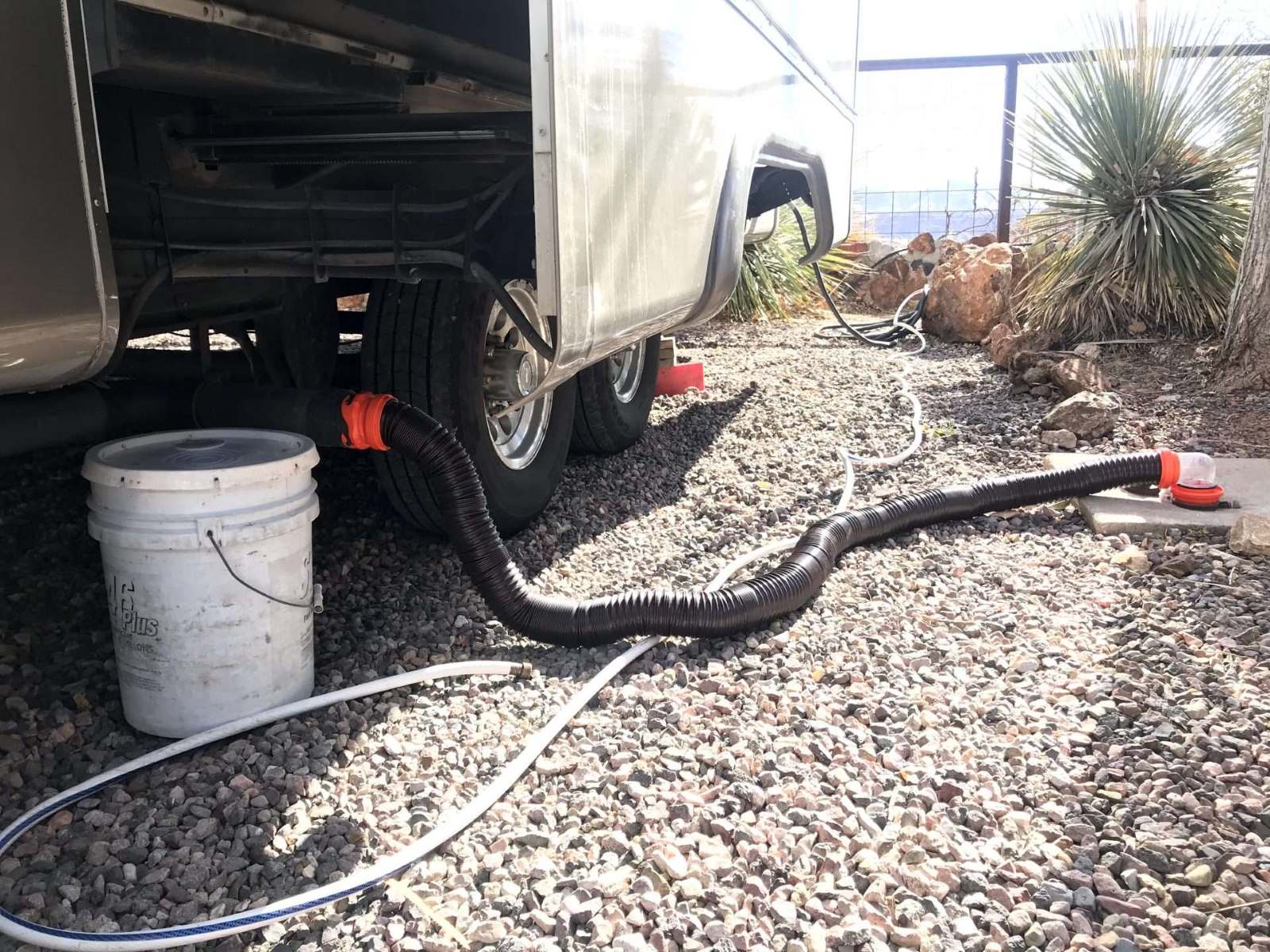
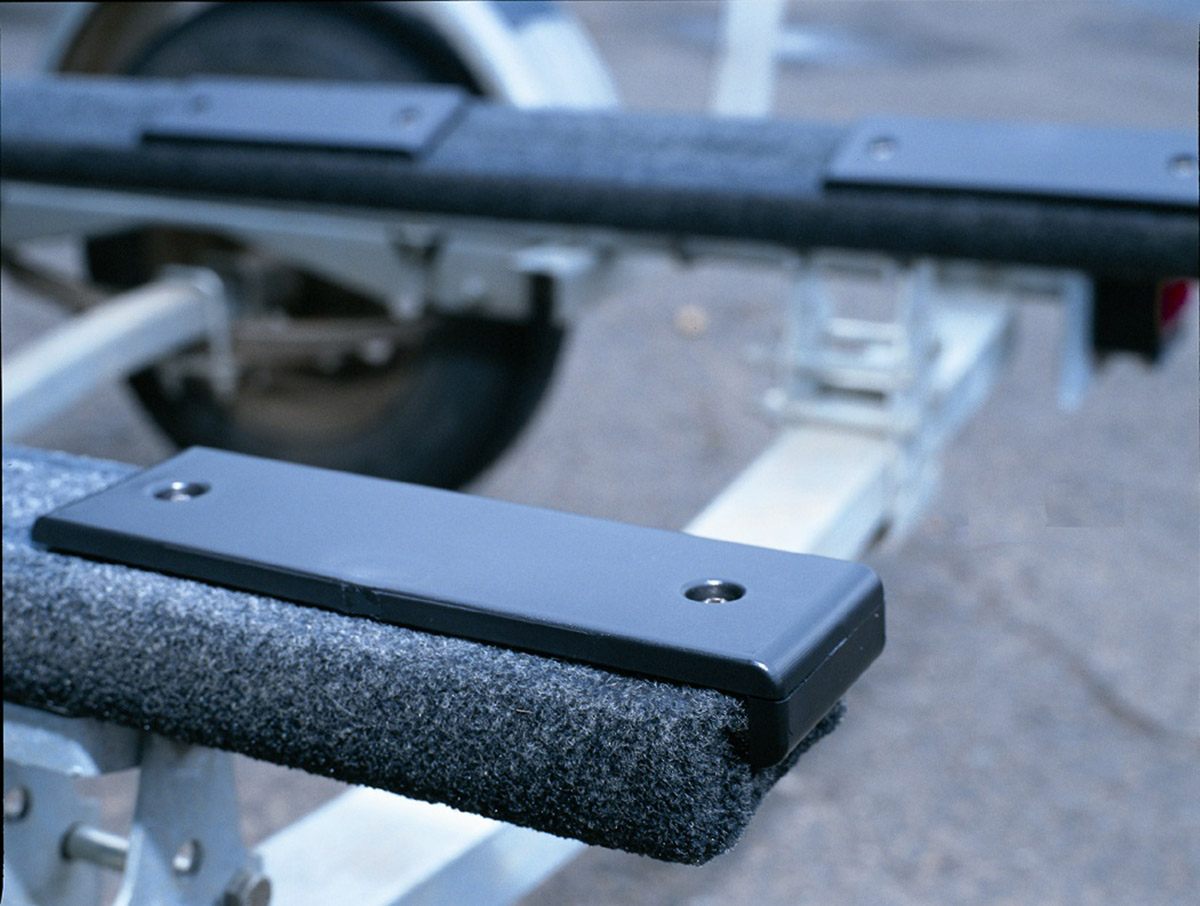
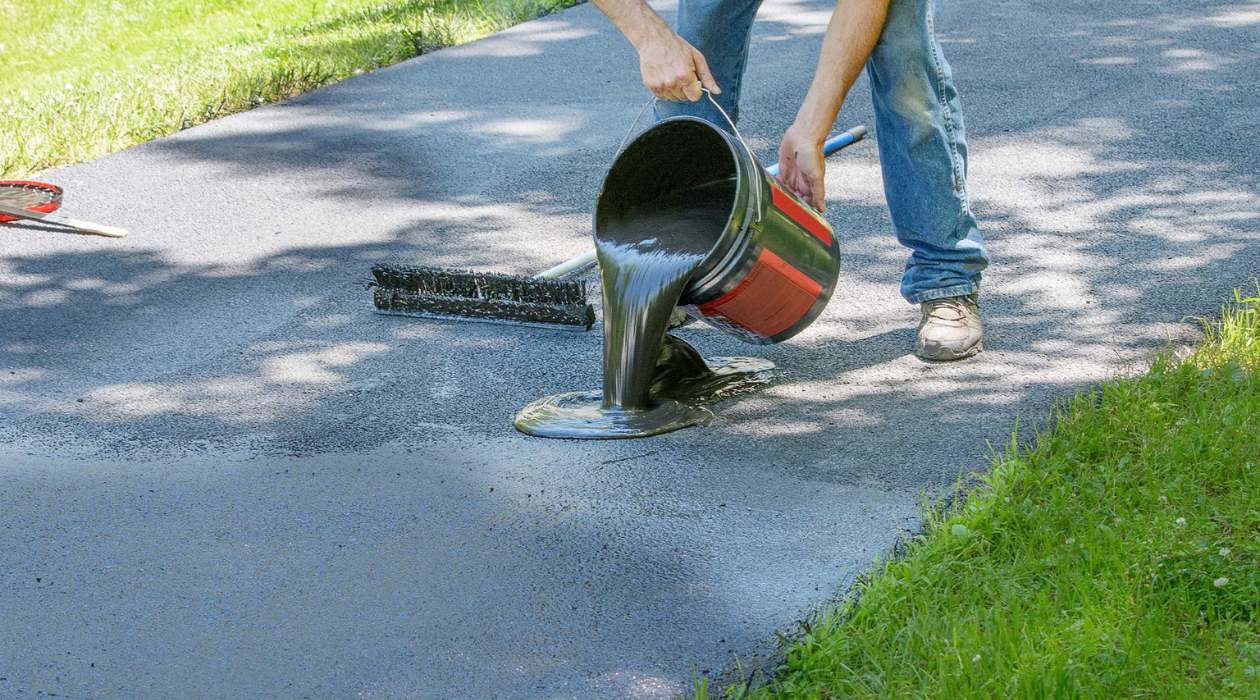




0 thoughts on “How To Back A Trailer Into A Driveway”